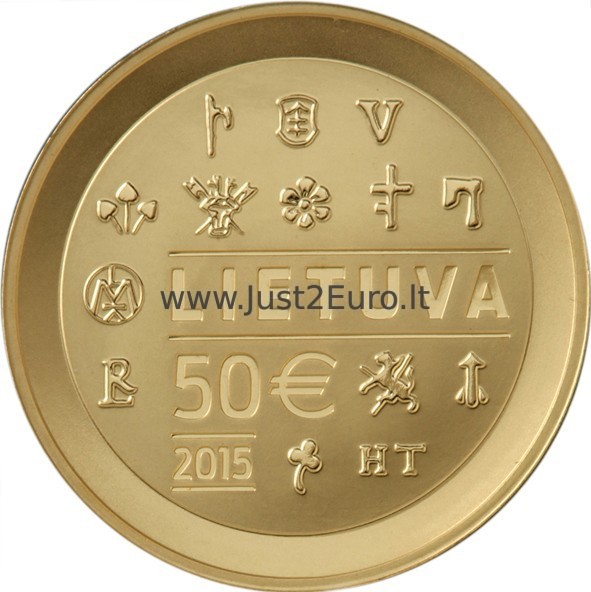50 Евро золотая монета 2015 Литва – Чеканка монет в Великом княжестве Литовском
50 евро монета с коробкой.
Металл, проба золото 999
Диаметр — 22,30 мм
Вес- 7,78 г
Качество пруф
Тираж, шт. 5000
Выпущенные в 2015 году
Описание
The reverse of the coin features marks of mint governors, mint-masters and coin die engravers. There is the inscription LIETUVA in the centre of the coin, the current mintmark of the Lithuanian Mint on the left side of the inscription, and the denomination and year of issue –– 50 €, 2015 — at the bottom.
On the obverse of the coin, the stylised coat of arms of the Republic of Lithuania, Vytis, is depicted as a combination of the historical coin and the back (negative) side of its minting instrument; there is also the mirror image LIETUVA (LITHUANIA).
The need for the Grand Duchy of Lithuania (GDL) to have its own coins appeared in the second half of the 14th c., when Algirdas beat the Tartar army of the Golden Horde at the Battle of Blue Waters and occupied Kievan Rus’. After this victory, a certain kind of safety zone appeared between the Golden Horde and the West, the onslaught of the Tartars into Western Europe was halted and trade routes from the GDL to the lands of modern-day Czech Republic, Hungary and Poland were opened.
The GDL’s coin system. The oldest GDL coin system was matched to the Prague groat, which dominated in Western Europe. The Duke of Kiev, Volodimir Olgierdovich was the rst to require his own money. He began to mint silver denarii, equal to 1/10 of a Prague groat. The rst national coins, minted in the fourth quarter of the 14th c. in the capital city of Vilnius — a PEČAT-type coin weighing 1 g., found in the Šančiai hoard — was equal to 1/2 of a Prague groat. At the end of the 14th c., due to in¡ ationary processes, the weight and silver neness of the GDL denarii decreased together with the Prague groat, until the weight settled between 0.3 and 0.5 g.
Production technology of the GDL’s coins. The rst GDL coins were minted in a primitive, manual way, by cutting the blanks from a silver sheet (half-groats) or chopped-o° and ¡ attened pieces of silver wire (denarii). At the end of the 15th c.–16th c., the Vilnius Mint began using screw presses and the particularly productive rolling presses.









